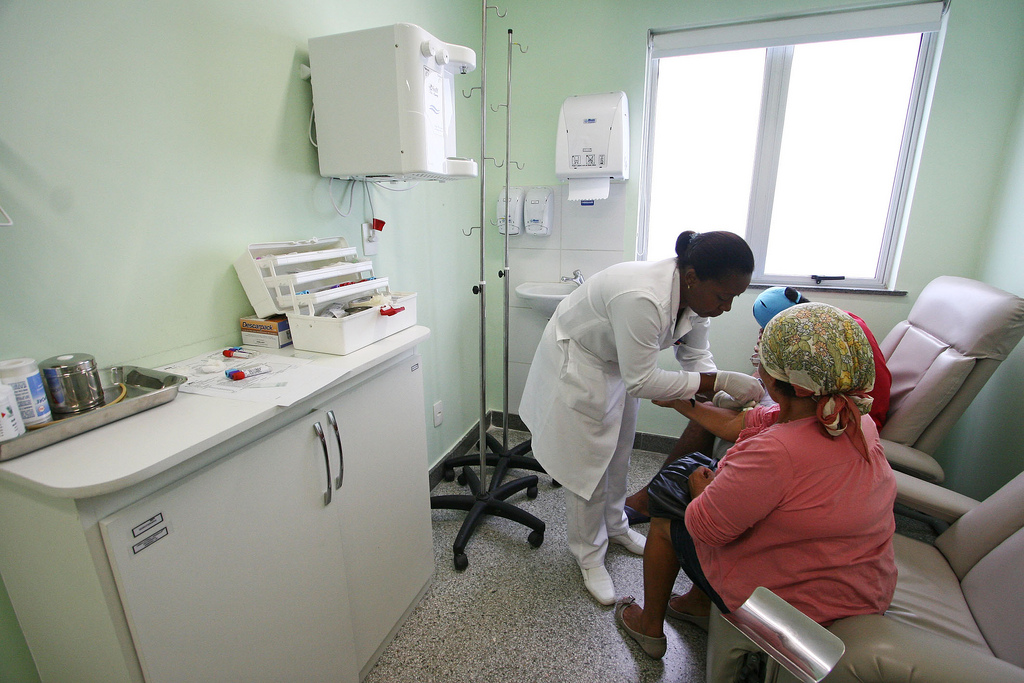Those working to become a respiratory therapist typically want two things: a better salary and a more fulfilling career. If you can make it through the training programs and clinical trials, you’ll end up with both. A respiratory therapist salary is great and if you take pleasure in helping others, personal fulfillment is sure to follow.
The prospects for entering the career are looking very good, much better than most other professions, in fact. Those who finish an accredited two or four-year program can expect to find a job quite easily. The occupation is attracting more people every day for a number of reasons, but there are a few things you should know about the profession before enrolling in an educational program.

A respiratory therapist salary depends on education and experience
What does a respiratory therapist do?
Respiratory therapists work primarily in hospitals, nursing homes and clinics. Most work in hospitals, where they care for patients who have trouble breathing or suffer any number of chronic illnesses that impact the lungs, such as asthma or emphysema. Respiratory therapists assist physicians in caring for patients by diagnosing, treating and managing those suffering from any number of breathing-related illness. Therapists use specialized equipment to test the level of oxygen going into someone’s lungs. Like doctors, respiratory therapists evaluate, treat and care for patients.
Most work in hospitals, which can mean long hours spent on your feet. It also isn’t unusual for respiratory therapists to work long hours or overnight shifts. The action never stops in a hospital, particularly if you’re working in the emergency room. If you are entering this field, prepare to work some strange hours.
How do the job prospects look?
This is one of the most appealing aspects of becoming a respiratory therapist: the job prospects are off the charts and pay is more than adequate. According to the Bureau of Labor Statistics, demand for respiratory therapists is expected to grow 28 percent through 2020. That means there are plenty of jobs and lots of room for advancement. The top respiratory therapists are pulling in more than $70,000 a year.
How can the prospects be this good?
The answer is actually pretty simple. What’s known as the baby-boom generation is headed out of middle age and into their elderly years. This is going to create a lot of demand for medical professionals across the board and respiratory issues just happen to be among the most common health problems. With a growing number of patients and a growing number of respiratory therapists heading into retirement, there are plenty of doors opening.
What should people know about a respiratory therapist salary?
While the salary will be great for anyone who entered the profession, it will be better for some. Take for instance, schooling. To become Certified with the American Association of Respiratory Care, you need either an associate degree or a bachelor’s degree – the bachelor’s degree takes two years longer to obtain and therefore, typically demands a slightly higher respiratory therapist salary.
However, if you start in the business with a two-year degree, you can expect a nice pay bump once you get around to finishing the four-year degree.
The hourly wage can swing quite a bit, from just over $16 to more than $30 and hour. Typically, your wage will depend on schooling and experience, although those working in a hospital will probably earn a little more than those in the private realm. Plus, if you end up on an overnight shift, you can expect a pay differential, which is basically a bump in pay to make up for the decrease in quality of life that comes with working graveyards.
Geography can also play a role in your respiratory therapist salary. Living closer to a city center will usually result in a higher salary based on the higher cost of living. For instance, therapists in San Francisco, San Jose and Washington, D.C. are among the highest paid in the country, but they also live in some of the most expensive cities in the United States.
In order to continually see an improvement in your salary, you’ll want to keep pursuing your education and make sure you stay on top of staying certified. Many hospitals want to see additional certifications beyond a college degree, such as the RRT – or Registered Respiratory Therapist designation.
What’s the first step in becoming an RRT?
Enrolling in a good education program is the best first step. You’ll find a lot of great information on this website about picking schools and enrolling. Starting with a two-year degree can allow you to work in the field and gain experience while you work toward your more advanced degree.
You’ll also want to contact some schools to learn more about their program, job placement rate and student life. There are plenty of factors to consider, but the important choice has already been made: you’ve decided to become a respiratory therapist.
